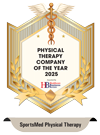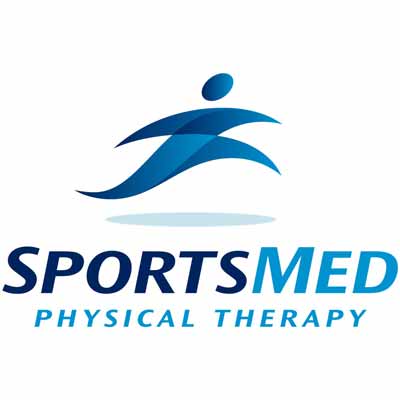Treating injuries is necessary, but ideally you want your body to be in a position to avoid getting injured in the first place. Lifting correctly while helping a friend with moving, or even doing household chores is essential to avoid injury, especially as we age.
Summer time is usually filled with outdoor tasks, such as taking care of the lawn, cleaning the backyard, or planting – that means LOTS of bending and twisting. Many of our non-sports related summer PT sessions are caused by household mishaps.
Today, we are going to cover how you should be lifting correctly to avoid back issues. Share it with a friend, and save their back!
First, let’s go over the movement. In a gym setting, there is a power movement called the Deadlift. This is essentially when you pick a ‘dead’ weight off the ground. The deadlift itself is part of a broader category movement called the hip hinge.
The hip hinge is a fundamental movement pattern. When lifting correctly, the movement will ensure loading of hips, specifically the glutes and hamstring muscles, and take the load off the knees and back.
It is best to practice this movement in a gym as part of a workout program, so that when in a real-life setting where lifting is required, proper preparation has already taken place. We call this functional training.
How to Hip Hinge
Start the movement with no weight. Dig your fingers into the creases of your hip. If this is hard to find, sit down and dig your fingers in the crease at the bottom of your stomach on the top of each thigh. Now stand up, that is the crease we are focusing on.
- From a standing position, place your fingers in the creases of your hip.
- Push into the hip so your butt goes back and your torso leans forward.
- Keep your chest out, and your eyes should be looking roughly six feet in front of you.
- Your hips should go back as far as possibly while keeping your shins as vertical as possible.
If done correctly, tension should be felt in the back of the leg – this is a loaded hip. Practice this movement until you can remove your hands and let your arms hang to the side. Once you can correctly load the hip without the guidance of your hands you are ready to add a little bit of resistance.
As your strength increases, you’ll be able to handle bigger weights. To train your body to handle the increased resistance, grab a kettlebell or dumbbell laid vertically and practice this portion of the movement.
- Stand with the kettlebell or dumbbell directly underneath you and your feet positioned roughly shoulder width apart.
- The weight should be in line with the arches on both feet.
- Bend down and grab the weight – be sure to do so while properly loading the hip.
- Your gaze should be roughly six feet in front of you.
- Stay down and pack the shoulder – point your elbow crease forward (your arm will rotate a bit).
- Keep your feet flat and push off the ground and stand up.
- Squeeze your glutes as much as possible at the top.
- Keep your chest out and lower the weight while loading your hip.
This may seem a bit much to do at one time but learning this process will aid in injury prevention because you will be lifting correctly. The body’s incredible ability to adapt will force those previously unused muscles to grow and get stronger. This is a great thing!
As always, it’s all about progression, so don’t rush. Only work with weights you can handle comfortably. Speak to your physician before starting any new workout plans.
Mainly, glutes and hamstrings need to be involved as much as possible when lifting heavy object off of the ground to avoid tension being placed on the lower back and knees. Lifting correctly isn’t just about strength – form is EVERYTHING. A solid core will also aid in injury prevention. Keep yourself healthy, strong, and moving this summer!
If you have any questions, or want a consultation with a professional, feel free to call, or schedule an appointment online at any of our Bergen County or Passaic County offices in New Jersey. Choose from Glen Rock, Franklin Lakes, Fair Lawn, Ridgewood/Ho-Ho-Kus, and/or Clifton – we make it possible for you to visit any of our offices at your convenience.





